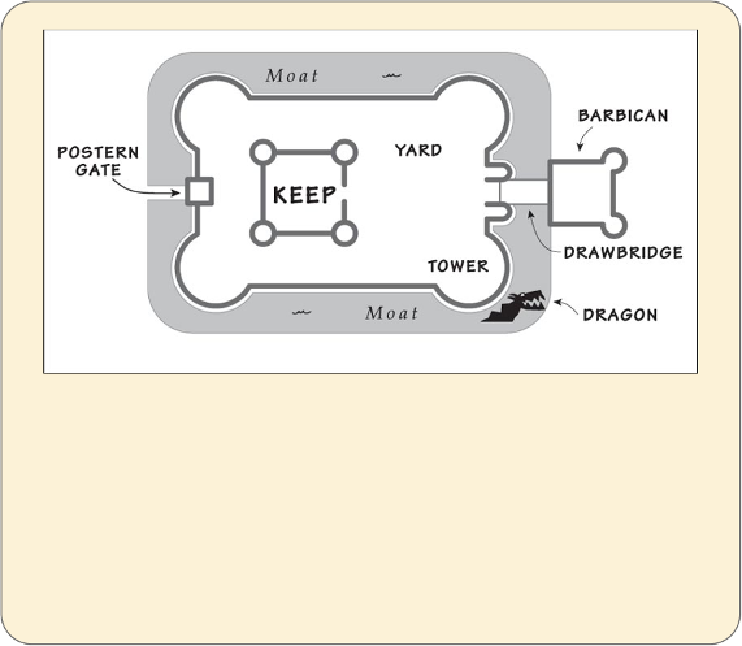Travel Reference
In-Depth Information
Machicolation:
A stone ledge jutting out from the wall, fitted with holes in the bot-
tom. If the enemy was scaling the walls, soldiers could drop rocks or boiling oil
down through the holes and onto the enemy below.
Barbican:
A fortified gatehouse, sometimes a stand-alone building located outside
the main walls.
Drawbridge:
A bridge that could be raised or lowered, using counterweights or a
chain-and-winch.
Portcullis:
A heavy iron grille that could be lowered across the entrance.
Postern Gate:
A small, unfortified side or rear entrance used during peacetime. In
wartime, it could become a “sally-port” used to launch surprise attacks, or as an
escape route.
In 1534, angered by
Henry VIII
and his break with Catholicism (and taking advantage
of England's Reformation chaos), the
Earls of Kildare
(father, then son) led a rebellion.
Henry crushed the revolt, executed the earls, and confiscated their land. Henry's daughter,
Queen Elizabeth I,
gave the land to colonists (“planters”), mainly English Protestants.
The next four centuries would see a series of rebellions by Catholic, Gaelic-speaking Irish
farmers fighting to free themselves from rule by Protestant, English-speaking landowners.
Hugh O'Neill
(1540-1616), a Gaelic chieftain educated in Queen Elizabeth's court,
was angered by planters and English abuses. He soon led a Gaelic revolt, in 1595. The
rebels were supported by the Spanish, who were fellow Catholics and England's archrival
on the high seas. At the Battle of Yellow Ford (1598), guerrilla tactics brought about an
initial Irish victory.

